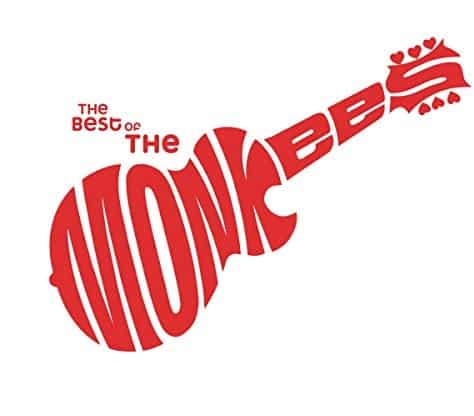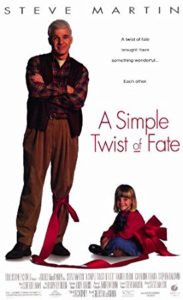
Just days after learning that the Monkees were on a national tour this past week, I heard the news about Peter Tork’s death. I questioned how a national Monkees tour could occur without Davy Jones, who passed away nearly seven years ago. Apparently, it wasn’t happening without Peter Tork, either, who had been ill and fighting cancer for the past ten years, but most specifically since 2018.
Tork was diagnosed with a slow-growing cancer of the head and neck in 2009. After surgery and during radiation treatment, Peter continued to play music on tour. For nearly a decade, he documented his struggle with adenoid cystic carcinoma on his Facebook page. In an interview with the Washington Post: Voices, “Peter Tork’s Cancer, In His Own Words,” published in July 2009, Tork described the scary words of his diagnosis, the harsh radiation treatment, and his commitment to continuing to perform.
After Monkee Davy Jones passed in 2012, I wrote “Hey, Hey, Find the Monkees… at the Library” for the March 23rd From the Library Column. In that column, I confessed that Peter Tork was actually my favorite.
When a library patron emailed me to remind me of my teenage fandom for the Monkees, and that he was sorry Peter Tork had died, I was prompted to reread the column. Fandom, of course, was not a common expression or word in the time of Monkees. Mania was. Specifically Beatlemania and Monkeemania. I was pretty maniacal about the Monkees television show, never missing a night of the season.
In the 2012 column, I admitted that I remembered “racing home from school clubs and babysitting gigs to catch the very start of the show each week.” Further, I confessed that we girls “were all a bit nuts about the Monkees. They were quirky, silly but cute. We all had our favorites (mine was Peter Tork). Davy was just too cute, Mickey Dolenz a bit odd, and Michael Nesmith way too moody.”
Peter Tork was chosen as one of the Monkees for his “open, Nordic look.” Dave Zimmer, in his biography of Crosby, Stills and Nash, wrote that twenty-one-year-old Steven Stills flunked his audition for the Monkees. He then recommended his blonde and lanky doppelganger, Peter Tork. Peter was already in his mid-twenties, older than the other three band leaders. (Davy Jones was a mere 19 when he signed on).
What I find most interesting is that musicians Jones, Nesmith, Dolenz, and Tork never played their own music on the two-season television series. Davy Jones was an accomplished actor and singer, playing the Artful Dodger in Oliver as a teenager. Dolenz took drum lessons so he could act like he was playing the drums, but he was a guitarist, along with Nesmith and Tork. Nesmith played country and rock, publishing his own songs. Dolenz had acted since he was a child, and played guitar in cover bands. In addition to the guitar, Peter played piano and banjo. Tork was a Greenwich, CT native, and spent years as a folk musician in Greenwich Village after a stint at Carleton College in Minnesota.
Even though Peter Tork was cast as the dumb-blonde, often playing the dummy on the Monkees television show set, as a 14-year old teen girl I was definitely attracted to his refined and cultivated side. In the early 1970s, just after I had graduated from high school, Peter moved to Northern California where he joined a local choir. Later, he spent three years as a high school educator, teaching music, social studies, math, French and history in Santa Monica. And coaching baseball on the side.
In 1967, after the television show had aired both seasons, the Monkees were finally given their due. They released Headquarters, an album on which they played the instruments in addition to singing. Peter Tork co-wrote several of the songs and received acclaim for them.
Peter Tork created the Shoe Suede Blues in 1994, playing as a band for a benefit. They were an instant hit and were asked to perform at other events, including at the Monkees 30th Anniversary Convention in 1997 (which was televised). Peter and the Shoe Suede Blues, in fact, continued to play their blues across the country in small venues, releasing albums from 1999 to 2018. Saved by the Blues and Cambria Hotel were a few of the best. Relax Your Mind is their most recent.
Peter’s given name was Thorkelson. His father was a college professor in Connecticut, and he had two brothers and a sister who, of course, did not use the name Tork. Peter went on to marry four times, the last surviving his death this past week. He had two daughters and one son.
Tork was a realist about fame. He felt that “happiness came simply from doing the work. In a Los Angeles Times article written in 1992, twenty-five years after the Monkees television show ended, he confessed that he wanted to play music full time. “A little bit of fame is fun, but I’ve had enough, thank you.”
Nostalgia about the Monkees is apparently here to stay, and we’ve collected many Monkees recordings at our library. The DVDs of the two seasons of the Monkees television show (1966-1967 and 1967-1968) feature 32 and 26 episodes, respectively, along with the movie Head, which hit the screens in 1968, just three years after the Beatles’ Help! The story of the Monkees and their manufactured music and band can also be watched online on the Smithsonian Channel. The 46-minute documentary is fascinating and includes footage of all the Monkees, including reclusive and moody Michael Nesmith. If you would like to reserve any of these titles in DVD or CD version, please call the Reference or Information desks of the library, 781-799-0200, or reserve them in the Minuteman library catalog.
On “The Real Peter Tork (official)” Facebook page, Peter’s family wrote that “Peter’s energy, intelligence, silliness, and curiosity were traits that for decades brought laughter and enjoyment to millions, including those of us closest to him. Those traits also equipped him well to take on cancer, a condition he met with unwavering humor and courage. We are asking fans who would like to make contributions in Peter’s name to donate to the scholarship fund at The Institute for The Musical Arts in Massachusetts, a nonprofit that provides young women with music education, music recording, and music community.
Charlotte Canelli is the Director of the Morrill Memorial Library in Norwood, MA. Look for her column in the February 28, 2019 issue of the Norwood Transcript.




